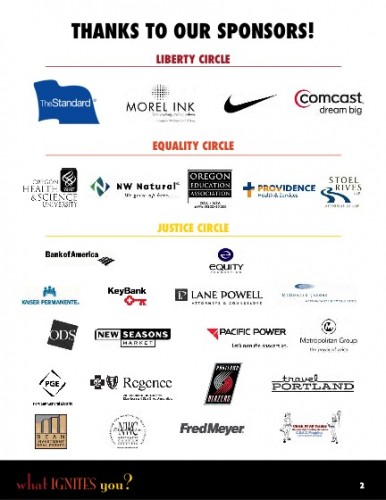Checklist for a Brand New Event
You want to add a new event into your fundraising program for the year, but you’re just not quite sure where to begin.
Our new event checklist gives you all the basics you need to figure out feasibility and hit the ground running planning a fun and successful event for your non-profit.
Here are six steps to keep in mind:
1. Set goals that are realistic and attainable.
How much do you want to raise? How much are you willing to spend? How many people do you want in the room, and are there any tangible results from your call to action that you want to achieve?
Figuring out all of these details on the front end gives you something to work toward as you’re planning, and a benchmark to measure the event’s success after the fact. Set a strategy in place to ensure your success at reaching these goals.

Putting a plan in place early can help you build relationships with potential sponsors
2. Develop a fundraising strategy.
Take the amount you want to raise at your event and break it apart into categories like sponsorship, ticket sales, special appeal and auction. Set realistic goals based on other events, experiences or the values of items. Make sure to evenly spread your expected revenue across multiple streams so you can adjust targets and goals if one area comes up short.
Delve even deeper into your goals and break apart sponsorship and special appeal goals by each level, and who you can target for each level. For example, how many $10,000 sponsors and $2,500 special appeal gifts do you want and who are your potential donors? Include a push goal as well, something additional for you and your committee to reach toward once you hit your targeted goal.
3. Establish your needs and timeline.
Set your event date and then work backwards to plan how to get there from today. When writing your plan, remember to focus on the fundraising first, and hold yourself firm to deadlines and goals around securing sponsors, selling tickets and procuring auction items.
Be sure to include important deadlines and milestones for the other aspects of your event in your workplan, like writing your script or deciding your menu. Hold your planning committee accountable to those dates but also remember to be flexible and adjust them if you need to.
4. Research and secure your venue.
Venues book up quickly, so as soon as you find a venue that fits your budget and attendance needs, book it before someone else does. Take note of important venue details as you research, like who are the preferred / exclusive caterers and what A/V and rentals are included with the space.

Certified benefit auctioneer Johnna Wells in action
5. Book your auctioneer and key speakers.
Auctioneers, like venues, book up as far as a year in advance, so you need to get them locked into place early. The best money you can spend is to secure a certified benefit auctioneer.
Key program speakers also have busy schedules that can be difficult to navigate. The earlier you ask them to speak at an event, the less likely they are to have a conflict, and the more time you have to use their name to help promote and build excitement about the event.
6. Pull together a committee.
A volunteer planning committee can expand your reach and bring in new resources. They are eager and vocal cheerleaders for your organization, and can use their personal and community connections to help procure auction items, secure sponsorships and sell tickets to the event.






